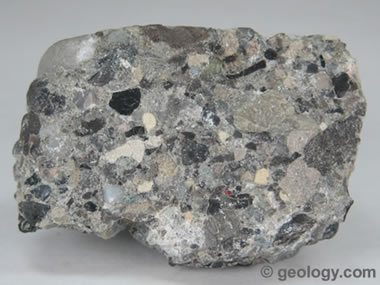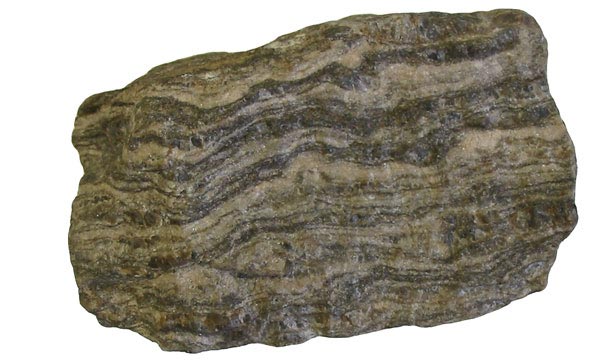Rocks & Minerals 2/29-3/4
 |
| Link |
Summary:
This week we were learning about rocks and minerals. What is the difference between rocks and minerals? Minerals are naturally occurring inorganic solids with a definite chemical composition, and an ordered atomic arrangement. This might be a lot at once, but I will explain it all later. A rock is a solid mineral that keeps changing shape. If it does not make sense now, soon it will. Just keep on reading...
Minerals:
 |
| Link |
The first thing is that you need to be naturally occurring. This mean that minerals are NOT made from humans. They naturally came from nature. Do you notice anything in those highlighted words? They all have the root word "natur."
The next thing you need to be a mineral is inorganic. What does that mean? Inorganic means that it is not alive, and that is not made up from plants or animals. Are we inorganic? What do you think? Are we alive? There's the answer!
The next one is pretty easy: Are you solid. This means: Do you have one shape that we stay in? if yes, then it is a solid. Does it take the shape of its container? If it does not take the shape of the container then it is solid.
I have never heard of what a definite chemical composition is. That sounds so confusing. It is. Think about a cake. When you are making a cake you need just the right amount of everything. If you leave out an ingredient the cake will taste bad, or not work out. There has to be the right amount of each chemical for a mineral to form (properly.)
One last thing you need to be a mineral. An ordered atomic arrangement. The chemical elements that make up each mineral are arranged in a certain way, in a certain order. Think of it like this: If you cut up a pepperoni pizza, not each part will have the same amount of pepperoni. This is the opposite of how the minerals' atoms would be. They have to be perfect.
That's all you have to have to be a mineral, well it is actually kind of a lot. Are we minerals? We are not naturally occurring, we are organic, we ARE solids, we have a definite chemical composition, and an ordered atomic arrangement, but still, we do not pass the test. We only passed on 3/5!
There are 3 stages a rock transforms through. Sedimentary, Igneous, and Metamorphic. Such complicated names! Don't worry you will learn all about these types of rock really soon!
The first type of rock is a sedimentary rock. Sedimentary rocks are formed from particles of sand, pebbles, shells and other small bits of material. These are called sediments.
Sedimentary rocks are pretty soft, and may break apart easily. To tell if it is a sedimentary rock, you can usually see pieces of sediments in the rock. This rock is obvious to determine because it is usually the only type that contains fossils.
When the lava cools fairly quickly, then no crystals will form and the rock will look shiny and glass-like. Sometimes when igneous rocks are forming, gas bubbles get trapped in the rock during the cooling process which leaves tiny holes, and spaces in the rock.
Have you ever heard of a metamorphic rock? Metamorphic rocks are formed under the surface of the earth through the metamorphosis change which is due the high heat, and pressure, which we will talk about in a moment.
The next thing you need to be a mineral is inorganic. What does that mean? Inorganic means that it is not alive, and that is not made up from plants or animals. Are we inorganic? What do you think? Are we alive? There's the answer!
The next one is pretty easy: Are you solid. This means: Do you have one shape that we stay in? if yes, then it is a solid. Does it take the shape of its container? If it does not take the shape of the container then it is solid.
I have never heard of what a definite chemical composition is. That sounds so confusing. It is. Think about a cake. When you are making a cake you need just the right amount of everything. If you leave out an ingredient the cake will taste bad, or not work out. There has to be the right amount of each chemical for a mineral to form (properly.)
One last thing you need to be a mineral. An ordered atomic arrangement. The chemical elements that make up each mineral are arranged in a certain way, in a certain order. Think of it like this: If you cut up a pepperoni pizza, not each part will have the same amount of pepperoni. This is the opposite of how the minerals' atoms would be. They have to be perfect.
That's all you have to have to be a mineral, well it is actually kind of a lot. Are we minerals? We are not naturally occurring, we are organic, we ARE solids, we have a definite chemical composition, and an ordered atomic arrangement, but still, we do not pass the test. We only passed on 3/5!
Rocks:
Sedimentary Rocks:
 |
| Sedimentary |
Sedimentary rocks are pretty soft, and may break apart easily. To tell if it is a sedimentary rock, you can usually see pieces of sediments in the rock. This rock is obvious to determine because it is usually the only type that contains fossils.
Igneous Rocks:
Igneous rocks get formed when magma cools down inside of the earth and hardens. They can also get formed when lava erupts onto the surface from volcanoes.
 |
| Igneous |
Metamorphic Rocks:
 |
| Metamorphic |
To tell a metamorphic rock from another type of rock check for these things: Check for ribbon-like layers or shiny little crystals that they get from minerals slowly growing over time on their surface. Wait, does this mean that a mineral is a rock? No. It just means that some metamorphic rocks have minerals growing on them.
The Changing of Rocks:
There are 5 transformations that rocks go through to change the rock form that they are in. Yes! Rocks change their type. The rock cycle keeps going on, and on. Kind of like the butterfly life cycle, except it keeps going on, and on, and on.
Weathering and Erosion turns igneous rocks into sediments, or sedimentary rocks into sediments. Weathering physically breaks apart a rock. Weathering includes the wind, water, temperature changes, and more. The pieces left are called sediments. Once these rocks are broken up, the erosion: wind and water, carry the sediments somewhere far from where they started. Weathering and Erosion work together to breakdown, and transport rocks.
Heat & Pressure:
Heat and Pressure is one way that rocks can change. Heat and Pressure changes a sedimentary rock into a metamorphic rock. It also changes an Igneous rock into a metamorphic rock. Basically heat and pressure can change both types of rocks into a metamorphic rock.
This happens beneath the earth's surface. The temperature increases until it is hot enough to melt most rocks. The pressure happens from tons of other rocks that are pressing down on this rock from above. Heat and pressure work together to change rocks under the earth's surface. This type of change is called metamorphism.
This happens beneath the earth's surface. The temperature increases until it is hot enough to melt most rocks. The pressure happens from tons of other rocks that are pressing down on this rock from above. Heat and pressure work together to change rocks under the earth's surface. This type of change is called metamorphism.
Melting:
The next type of change is melting. You might think that melting works with cooling, but it doesn't! Melting turns a metamorphic rock such as marble into magma. The rock gets pulled down by movements in the earth's crust. The rock gets hotter, and hotter when it gets deeper. A rock will only melt at temperatures of 1,100 and 2,400 degrees F. The higher temperatures are often found deep within the earth.
Cooling:
Now you might be wondering what happens to the magma after it gets formed, well the only rock that can be formed out of magma is an igneous rock such as obsidian. The igneous rock gets formed after the magma gets cooled down.
Sometimes the magma rises from deep down and ends up exploding out of the volcano. Now, it is not called magma anymore because it is lava. Now, what? When the lava cools down it still forms an igneous rock, but it is called an extrusive igneous rock. That sounds cool!
Weathering & Erosion:
Compacting & Cementing:
Once the sediments are broken down and transported, compacting and cementing comes along. Over a period of time, the sediments are forming together in oceans, lakes, and valleys. The sediments build up in layers and weigh down the material underneath. The weight presses the sediments together which compacts them. Then, the water that passes through the spaces between the particles help cement them together even more. Once the sediments are cemented together this forms a sedimentary rock.
SP4: Analyzing and interpreting data
In class, we used tables and graphs to display and analyze data about rocks and minerals as we were exploring websites. We also analyzed data when we were playing a game about defining minerals.
Conclusion:
I hope that rocks and minerals don't sound that confusing anymore. Do you remember the difference between these two? Would you be able to explain what rocks and minerals are now? (How rocks change, what it takes to be a mineral, etc.) I am glad that I did all of this research because I have learned a lot!
Sources & Credits:
"Welcome to the Minerals Homepage in the Learning Zone!" The Learning Zone: Minerals. N.p., n.d. Web. 06 Mar. 2016.
"The Rock Cycle Diagram." Interactives . The Rock Cycle . The Rock Cycle. N.p., n.d. Web. 06 Mar. 2016.
Here is a rap song about the rock cycle:
Here is the link to the video:
Comments
Post a Comment